Friday evening found me crowded into a shed with a motley group of individuals. The shed was attached to the back of a slant-roofed little house tucked into a steep hillside a few miles north of Fairbanks, Alaska. The crowd included everything from grey-haired retirees to stay-at-home moms to workers in grimy Carhartts, and even a few professional transporters like myself. Chatter wandered between the heavy snow load, predictions of when the first willow blooms would be out, and speculation about whether the coming summer would be as poor for pollen collection as the last one was.
At the back of the shed, an elderly gentleman with wild white hair handed out buzzing cages; each sturdy 4 inch by 16 inch by 12 inch enclosure contained a queen and roughly 5,000 of her subjects, totaling 4 lbs of bees. (Bees are sold by weight rather than number for reasons of expediency.) This particular bee dealer is the only one in Fairbanks, supplying hundreds of backyard beekeepers in the area.
I’ve been transporting bees for over a decade now, but rumor has it this will be the bee dealer’s last year. That may mean the end of my yearly bee run, or it may mean a much lengthier run down to Delta Junction or Anchorage to meet another dealer. For now, I collect 8 lbs of bees, wrap their cages in my jacket, and climb up a crude staircase to the dealer’s parking area. Now comes the fun part.
It’s late evening and getting dark, so I drive home and tuck the bees into my heated garage for the night. It’s about 60F in there, the ideal temperature for keeping bees calm and comfortable while in transit.
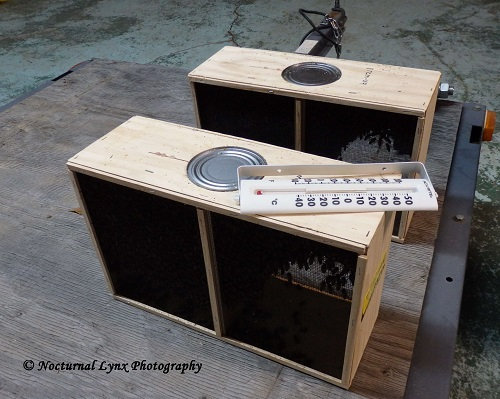
Clustered around their queen, the bees emit a faint, contented buzzing when I come down to check on them in the morning. Armed with a pan full of room-temperature sugar syrup, I lift out their feeder cans one by one, cover the open tops of the cages, and fill the cans up. Pro-tip: don’t waste time trying to tuck stray bees back into their cage. For every two you tuck in, eight more escape.
Then it’s time to pack up the truck with the bees and all the gear I’ll need to get them to their destination: a sled, a sleeping bag to keep the cages warm, snowshoes, and lots of bungie cords. It’s a fun hour-long drive with the sound of agitated buzzing rising from behind our seats; my photographer friend comments that it’s a bit disconcerting to be sharing an enclosed space with 10,000 agitated bees. I’ll admit that the same thought has occurred to me, but I stopped thinking about it after the first year or two.
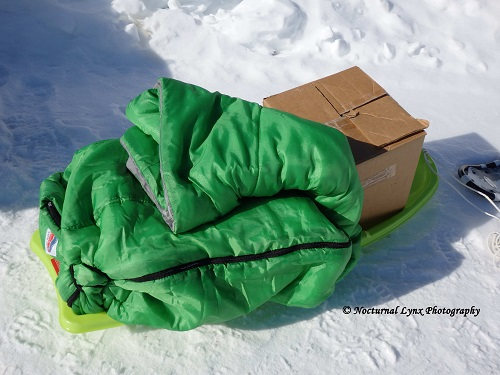
A group of bees can generate an impressive amount of heat. It’s in the 20s Fahrenheit at the parking area, and the light insulation of this sleeping bag is enough to keep them comfortably warm. The box is full of supplies for the beekeeper, a forester and homesteader who prefers the peace of the wilderness to the chaos of human places.
From the pullout on the Steese Highway, it’s a two mile hike with roughly 2,000 feet of elevation gain from the Chatanika River valley up to a remote homestead in the foothills of the White Mountains. The road is somewhat drivable with 4WD in summer, but snowmachine or snowshoe-only in the winter. Fortunately it’s sunny, clear, and calm–I couldn’t ask for more perfect weather.
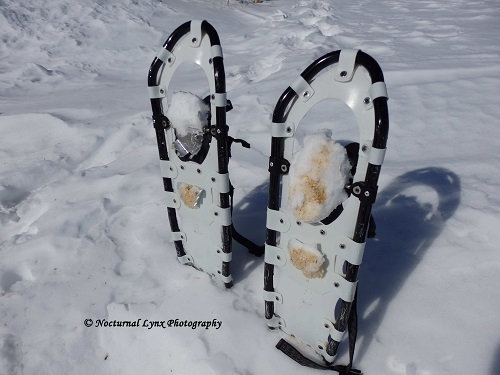
The downside to warm, sunny weather? Soft snow that sticks to the bottom of snowshoes and necessitates stopping every so many steps to knock the clumps off your feet. But it was worth it–just look at that view!
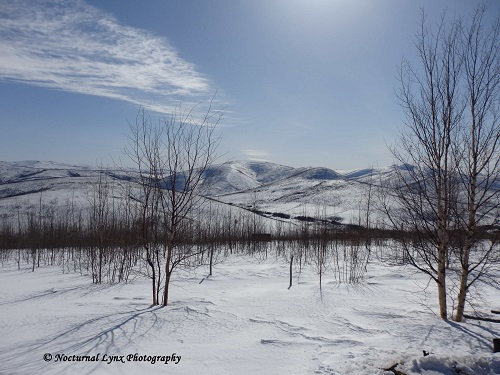
The bees complete the journey in good shape, and we spend the afternoon enjoying the view and the hospitality of the beekeeper. A gathering of black-capped chickadees and a downy woodpecker keep us company.
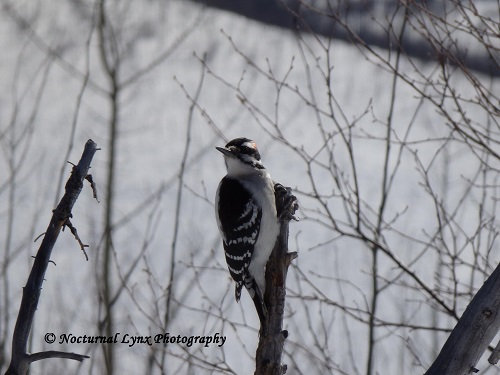

In the tail end of the afternoon before the temperature starts to drop from the day’s high of 43 degrees, we hive the bees.
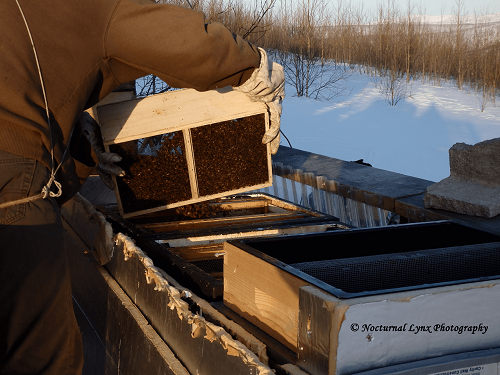
At cooler temperatures, bees huddle up for warmth. This makes it exceptionally easy to “pour” them into their new homes.

These specially-built insulated hives were warmed up indoors and stocked with empty brood comb. Now the beekeeper adds several combs full of last year’s honey so the bees will have plenty to eat and feed their offspring while waiting for warmer weather to bring out the first willow and birch blooms.
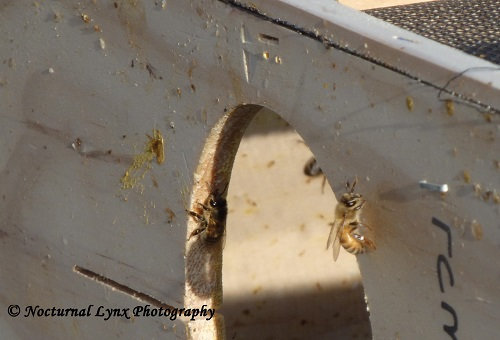
With the exception of a few stubborn stragglers, everyone makes it into their new hives. An impressive feat, considering that it’s barely above freezing and there’s still several feet of snow on the ground.
Special thanks to Lynx of Nocturnal Lynx Photography, without whom I could not have put together this article.

Rik Ty says:
!!!!!!!!!!!!!!!!!!!!!!!!!!!!!1 What a nice glimpse! VIVA!!